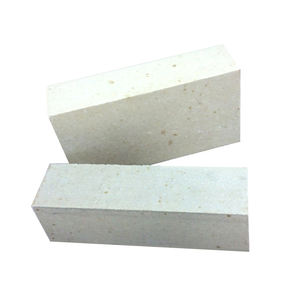Top News
Design
Aluminum Nitride Ceramic Substrates: Enabling High-Power Electronics Through Superior Thermal Management hollow ceramic tubes
1. Material Scientific Research and Structural Characteristic 1.1 Crystal Structure and Chemical Stability (Aluminum Nitride Ceramic Substrates) Aluminum nitride (AlN)...
Read moreRelease Agents: Interfacial Engineering for Controlled Separation in Industrial Manufacturing concrete additives
1. Essential Concepts and Mechanism of Activity 1.1 Interfacial Thermodynamics and Surface Power Modulation (Release Agent) Release representatives are specialized...
Read moreHollow Glass Microspheres: Lightweight Inorganic Fillers for Advanced Material Systems solid glass microspheres
1. Product Make-up and Structural Layout 1.1 Glass Chemistry and Round Architecture (Hollow glass microspheres) Hollow glass microspheres (HGMs) are...
Read moreInterior & Design
Luoyang in Its Heyday, Shared with the World— ‘iLuoyang’ International Short Video Competition” Wraps Up with Resounding Success
The entry period for the “Luoyang in Its Heyday, Shared with the World— ‘iLuoyang’ International Short Video Competition” has now...
Luoyang in Its Heyday, Shared with the World— ‘iLuoyang’ International Short Video Competition” Wraps Up with Resounding Success
The entry period for the “Luoyang in Its Heyday, Shared with the World— ‘iLuoyang’ International Short Video Competition” has now...
Latest Post
The Ultimate Guide to Oil Immersed Transformers: Powering Modern Grids with Reliability and Efficiency types of power transformer
Discover the comprehensive overview to oil immersed transformers, including oil immersed power transformers and oil immersed distribution transformers. Discover their working concepts, types, advantages, and progressing role in smart grids and renewable resource. 1. Introduction to Oil Immersed Transformers In the intricate web of our...
A Must-Read for Purchasing Railway Cast Iron Parts: 5 Critical Quality Standards You Can’t Ignore Railway gearbox manufacturer
Every component in a train system have to work well. This maintains the system safe and effective. Train casting parts are extremely important. They give assistance, attach points, and conduct signals. Their top quality impacts just how stable the train network is. When you get...
Boron Carbide Powder: The Ultra-Hard Ceramic Enabling Extreme-Environment Engineering b boron
1. Chemical and Structural Basics of Boron Carbide 1.1 Crystallography and Stoichiometric Variability (Boron Carbide Podwer) Boron carbide (B FOUR C) is a non-metallic ceramic compound renowned for its extraordinary solidity, thermal security, and neutron absorption capability, placing it among the hardest recognized materials-- exceeded...
Luoyang in Its Heyday, Shared with the World— ‘iLuoyang’ International Short Video Competition” Wraps Up with Resounding Success
The entry period for the “Luoyang in Its Heyday, Shared with the World— ‘iLuoyang’ International Short Video Competition” has now concluded with great success. Attracting participants from across the globe, the competition received more than 1,300 submissions from creators in 19 countries, including the United...
Luoyang in Its Heyday, Shared with the World— ‘iLuoyang’ International Short Video Competition” Wraps Up with Resounding Success
The entry period for the “Luoyang in Its Heyday, Shared with the World— ‘iLuoyang’ International Short Video Competition” has now concluded with great success. Attracting participants from across the globe, the competition received more than 1,300 submissions from creators in 19 countries, including the United...
Alumina Ceramic Blocks: Structural and Functional Materials for Demanding Industrial Applications high alumina refractory
1. Material Fundamentals and Crystallographic Characteristic 1.1 Phase Make-up and Polymorphic Habits (Alumina Ceramic Blocks) Alumina (Al ₂ O FIVE), specifically in its α-phase form, is just one of the most commonly made use of technological porcelains as a result of its excellent equilibrium of...
Alumina Ceramic Tubes: High-Performance Inorganic Conduits for Extreme Environment Applications boron nitride machinable ceramic
1. Product Attributes and Architectural Layout 1.1 Make-up and Crystalline Phases of Alumina ( Alumina Ceramic Tubes) Alumina (Al Two O SIX) ceramic tubes are mainly produced from high-purity aluminum oxide, with purity levels usually ranging from 90% to 99.8%, depending on the designated application....
Polyvinyl Alcohol Fibers: High-Performance Hydrophilic Polymers for Advanced Material Applications pva 8mm fibers
1. Molecular Structure and Physical Residence 1.1 Chemical Structure and Polymer Design (PVA Fiber) Polyvinyl alcohol (PVA) fiber is a synthetic polymer derived from the hydrolysis of polyvinyl acetate, resulting in a direct chain composed of duplicating--(CH ₂-- CHOH)-- devices with differing degrees of hydroxylation....
Spherical Aluminum Nitride: Engineered Powder for Advanced Thermal Management and Composite Applications aluminum tig welder
1. Material Principles and Morphological Advantages 1.1 Crystal Structure and Innate Features (TRUNNANO Aluminum Nitride Powder) Round light weight aluminum nitride (AlN) is a specific ceramic powder kind that maintains the extraordinary physical and chemical buildings of bulk AlN while supplying enhanced flowability, packaging thickness,...
Alumina Crucibles: The High-Temperature Workhorse in Materials Synthesis and Industrial Processing cylindrical crucible
1. Product Principles and Architectural Properties of Alumina Ceramics 1.1 Structure, Crystallography, and Phase Stability (Alumina Crucible) Alumina crucibles are precision-engineered ceramic vessels fabricated largely from aluminum oxide (Al ₂ O FOUR), among the most commonly made use of sophisticated ceramics because of its exceptional...



















